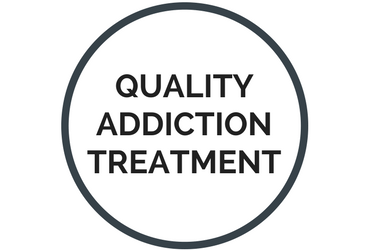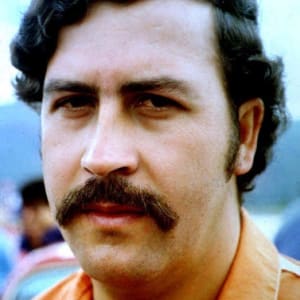
Contemporary Drug Treatment Programs
In his book, “On Pills and Needles,” Rick Van Warner makes a compelling argument against the continuation of the current drug treatment modality for drug addicts. He writes, accurately, that drug treatment centers are not regulated. Therefore, they can get away treating thousands of individuals with absolutely no oversight.
Since drug addiction has been classified as a medical condition, it has opened the doors for many “drug treatment” programs. Each program claims to have the magic pill to treat drug addiction. However, there is no Food and Drug Administration (FDA) to oversee the effectiveness of treatment delivered in these programs.
Just think, when pharmaceutical companies market a new drug, they must undergo countless tests and trials regarding the safety and effectiveness of their drug. However, regarding drug treatment, there is no measurement of success, failure, or safety. Yes, “safety.”
During the OxyContin epidemic, the time period of Mr. Warner’s book, drug treatment was the place to get your pills. Any milligram OxyContin, 10’s, 15’s, 20’s, 30’s, 40’s, 60’s, 80’s, or the Grand Marlin of pain management the 160’s, could be traded at any drug treatment center, for anything. While these pills were being traded, public safety be damned.
So, just at the time the Affordable Care Act (ACA – Obama Care) declared drug addiction a disease, drug treatment centers did not behave like part of the medical establishment. In fact, if you were lucky enough to have health insurance, you could get into a program. However, the program would only treat the individual for a maximum of 30 to 90 days; regardless if you needed a longer stay. Why 30 to 90 days? As Mr. Warner points out in the book, that is all the insurance carrier will pay.
Yes, magically you are cured of a disease, you possibly had your entire life, in 90 days. The prescription for the drug treatment center is easy: Get the addict into their treatment program and move them out in 90 days. There is no measure of success or failure but make sure you collect their insurance. Get another addict in the program and move them out in 90 days. Oh, don’t forget to collect their insurance.
What if they don’t want to stay for 30 or 90 days? Most addicts are forced into drug treatment because of a criminal act. Whether they stole from someone they knew, or were caught in possession of a drug without a prescription, sadly most addicts shed the label of addict and are given a new label, “criminal.”
So, they end up in court and are at the mercy of an overtaxed criminal justice system. The options are pointless, go to jail or go to treatment for 90 days. While addicts are addicted, they are not stupid, they go to treatment for 90 days.
In his book, “On Pills and Needles,” Mr. Warner and his family went through the charade of the current drug treatment system with his son. He describes it with perfection.
As a retired federal probation officer, I saw what his family went through countless times; the feeling of helplessness, wondering what went wrong, and just being scared to death of “will I have to bury my child?” Spending your entire fortune on treatment programs and your child is still addicted.

However, I don’t want to indict the entire drug treatment industry. I have seen some very excellent programs. Programs that understand drug addiction goes beyond a 90-day program. They make it understood that it is a lifetime commitment.
Drugs Will Never Go Away
The world of addiction is ongoing with every new drug that enters the streets. In the 1960’s, the Vietnam Conflict brought heroin addiction into the United States. In the 1970’s, America was dealing with a marijuana and powder cocaine problem. The cartels in Columbia and Mexico sent bundles of marijuana and kilograms of cocaine into the United States by plane and boat.
When I first started in my career in the early 90’s, crack cocaine was the drug that would end civilization. Crack cocaine entered the streets of America in the 1980’s. Small-time drug dealers found a new way to sell cocaine. There was no need to move kilograms of cocaine in order to make a large profit. All they had to do was convert it into crack cocaine and the money would pour in by the ounces, not kilograms.
Along with the crack cocaine addiction came the violence. These dealers had to protect their turf (or their corner), their drug, and their low-level street dealers. “Yeah, you get caught, you don’t know my name, right kid.”
The rise of crack cocaine gave new prominence to the drug cartels of Columbia and Mexico. Almost 90% of the cocaine entering the United States, came from the Medellin and Cali Drug Cartels.
Pablo Escobar, the notorious leader of the Medellin drug cartel, moved his cocaine by way of Mexico in the most violent fashion. Once Pablo Escobar and his cartel was broken up in the 1990’s, America found escape in psychedelic drugs made in garages or backyard trailers or sheds.

In the 1990’s, Methamphetamine made a big resurgence with private, at home, “cooks.” The drug was so potent and dangerous that old time truck drivers and bikers once addicted to methamphetamine said they would never touch it.
It was at the turn of the century that America became addicted to OxyContin. The drug discussed in Mr. Warner’s book. It was OxyContin that this retired probation officer had the hardest time encouraging drug addicted cases into treatment.
Now, as a left federal service, a new even more powerful drug, fentanyl, emerged. Fentanyl is not a new drug. It has been around as a surgical anesthesia. However, the drug dealers and addicts perverted its clinical use. See, there is always a new drug to take the place of the old. So, instead of reacting, let us start to be proactive. Let us build a better drug treatment system. Our future depends on it.
Leave a Reply